Seeds of change | New farmers running smaller operations invigorate Maine's agricultural landscape
Stacy Brenner bends over a tray of spinach seedlings as her husband, John Bliss, sits behind her in the damp warmth of a greenhouse on their Scarborough farm. Their pigtailed four-year-old daughter, Flora, squats nearby, peering into a pen of softly clucking chickens. Planting will start soon, but for now, all of the farm’s produce for the coming season, the fruits, vegetables and flowers that make up this family’s livelihood, is incubating inside this greenhouse.
Clad in wool sweaters and sturdy shoes, the couple looks the part of full-time farmers. The path they took to this way of life, however, was anything but traditional. Both 37, Brenner and Bliss were raised in the suburbs, he outside Boston and she near Philadelphia. Neither had a strong relationship to agriculture growing up, but as adults each of them discovered a calling to the land. In 2002, they enrolled in the Maine Organic Farmers and Gardeners Association journeyperson program, a two-year training, mentoring and business-planning course for prospective farmers.
After farming stints in Cape Elizabeth and Cumberland, the couple founded Broadturn Farm five years ago. Today, the farm supports Stacy, John, Flora and their 14-year-old daughter Emma as well as three employees with a 150-member community-supported agriculture program offering organic vegetables, flowers and pick-your-own strawberries, as well as poultry, lamb and pork. Brenner and Bliss have invested roughly $100,000 in the property and another $200,000 in the farm business. “You go into it with a hearty bag of ideals,” says Brenner, her red hair gathered into loose pigtails. “As you realize you have to be a cooperator in your local community and an abider of town ordinances, you need to wear a bigger hat for business.”
Younger farmers like Brenner and Bliss are invigorating Maine’s agriculture industry, riding a societal shift toward locally sourced goods that has made farming a viable enterprise even for those lacking land and generational expertise. The average Maine farmer is 56.4 years old, hardly a spring chicken but ranking the state a decent 17th in the nation (between Wisconsin and Indiana’s youthful 55 years and last place New Mexico’s comparatively old 59.6), according to 2007 USDA census figures, the most recent available. The age is lower among Maine’s organic farmers, who average 52 years old.
Maine does stand out, however, in the number of farms operating here. The state counted more than 8,100 farms harvesting crops and tending livestock last year, the highest in New England and up more than 12% from 2002. More than half of those farms recorded $10,000 or less in gross annual sales, with direct-to-consumer sales making up an increasingly larger piece of Maine’s agricultural pie. “Maine is on a good trend in terms of the growing number of farms and the average age of farmers,” says Lauchlin Titus of AgMatters LLC, a crop consulting service in Vassalboro. The state’s farms generated $578 million in cash receipts in 2009, a 15% drop from the previous year but still beating out all of the other New England states. “It’s partly due to a fairly dramatic increase in the purchase of local products,” Titus says.
Brenner and Bliss are earning their living off of that movement, grossing roughly $150,000 in annual sales. The CSA makes up the bulk of their income, but another roughly 30% comes from other lines of business they’ve developed, including floral design services and a popular summer camp in which potential “budding entrepreneurs” man a farm stand, Bliss says. “I joke that the farm is an advanced lemonade stand,” he says. Broadturn also hosts eight to 10 weddings a year, with guests noshing on food supplied by the farm and enjoying flowers picked on the property. “They see the cow being milked while they drink their cocktails,” Brenner says.
As far as the couple has come in living off the land, they have miles to hoe before they sleep. “We’re never not adding something to our knowledge base,” Bliss says. And while direct-to-consumer sales have fueled growth at Broadturn and many farms like it, the state’s small, widely dispersed population can support only so many farm stands and farmers’ markets.
The evloving characteristics of Maine farms
Average farmer age by county, 2007
To market
The typical Maine farm has shrunk in recent decades — from 221 acres in the late 1970s to 166 in 2007 — as large conventional operations shut down or downsized and smaller upstarts sprouted up. And while the state is losing farmland to both development and abandonment, Maine has recovered from a trough in the late 1990s, leading the New England states with 1.35 million acres of farmland last year. “No doubt we are losing farmland in urbanized areas” as houses pop up instead of crops, says Walt Whitcomb, the state’s agriculture commissioner. “The only thing we don’t recover from is asphalt. For generations, we’ve lost more acres to tree growth than development. They’ve been abandoned,” Whitcomb says.
Maine lost 4,440 acres of farmland per year to development from 2002 to 2007, according to the USDA. But while a concern in some areas of the state, such as southern and Midcoast regions, “Maine has not lost a huge, huge amount of farmland to development,” says John Piotti, executive director of the Maine Farmland Trust. “Much of the land that’s good for farming has either stayed in farm use or is still available for farm use.” However, the next five to 10 years will be critical as older generations bequeath or sell their farmland to new owners, who may have no interest in farming, and as development pressure prevalent in other areas of the country marches on to Maine, Piotti says.
But the challenges don’t end there. While direct-to-consumer sales have shown robust performance in recent years, new farmers running small operations face increasing competition. “Almost everyone in this pool is a direct marketer to start,” says Russell Libby, executive director of the Maine Organic Farmers and Gardeners Association. “How much capacity do we have for direct marketing? It’s a growing tension out there.”
While the local food niche is popular, Maine’s still a small state population wise, Whitcomb points out. “We want ‘local’ to include Boston, too,” he says. Organic farming, while growing — surging from $4 million in sales 2002 to $23.3 million in 2007 — still makes up only about 8% of Maine’s agricultural production, Whitcomb says. “We’re still a very big agricultural state with traditional commodities. The traditional folks don’t make as much per unit.” Higher costs for organic goods also play a role, he says. “How many customers are willing to pay that much more for a product with no defined difference?” Whitcomb asks. “Certainly there’s a perceptive difference.” He doesn’t think Maine has yet hit the saturation point in selling food directly to consumers, but “not everyone can make a living selling products that appeal to tourists on Route 1.”
Numbers game
Gaining access to land and identifying a market aren’t the only potential stumbling blocks for new farmers, says Ed Ashworth, dean of the University of Maine’s College of Natural Sciences, Forestry and Agriculture, which is seeing rising enrollment in its sustainable agriculture program. “One of the difficulties for these people is the capital investment to start a farm, the land particularly,” he says. “The other is, when you’re young you might think you’re immortal and not worry about health insurance and retirement benefits and the like.”
Bliss and Brenner of Broadturn Farm have opted against land ownership, choosing instead to lease their largely wooded 434-acre property from the Scarborough Land Conservation Trust.
The couple has also chosen to go without health insurance, figuring that a major illness or injury would wipe out their savings even if they had coverage. “We’re not making a knee-jerk reaction,” Bliss says as a gust of wind rustles the greenhouse’s plastic sheeting. “We’ve looked into the numbers.” Brenner, who’s also a registered nurse, adds, “The work we do and the food we eat is our health insurance.”
For a five-acre farm that’s paying the typical 20% of gross income for health care coverage, “an acre is going to pay for your insurance costs,” says MOFGA’s Libby. As for purchasing land, property generally becomes more affordable as you travel north, but higher prices in southern Maine have led to leasing and other creative approaches, he says. The portion of Maine farmland being rented rather than owned ticked up more than 7% to nearly 200,000 acres between 2002 and 2007, and that figure likely continued to rise over the last four years.
MOFGA’s journeypersons program seeks to aid new farmers in tackling such roadblocks. Designed to bridge the gap between farm apprenticeship and ownership, the two-year training program had three members when Brenner and Bliss participated in 2002, and today has swelled to 50, with more applicants than it can accommodate. “This is our effort to really bring along another generation of Maine farmers,” Libby says.
Farmers are also employing another tactic common to other small businesses facing cash flow challenges: working outside jobs. More than 3,200 Maine farmers labeled “principal operators” by the USDA reported working 200 days or more off their farms in 2007. And not only new farmers rely on outside income.
Penny Jordan, who operates the fourth-generation William H. Jordan Farm in Cape Elizabeth with her three siblings, was blessed with 50 acres and the existing infrastructure of the farm her father founded in 1948. But Jordan, a former project manager for Unum, also works for a land stewardship nonprofit, and her brother and sisters hold other jobs as well. “It’s not a new thing, it’s just the way the world works,” she says of farmers working multiple jobs. The farm may not entirely support them financially, but, “Our goal is that we’ll build the business to a point where we aren’t as dependent on off-season income,” she says. The farm grossed more than $500,000 last year and sales have on average grown 20% to 25% annually, thanks in no small part to strong business planning, targeted retail efforts and sales of value-added products, Jordan says.
Her mission is to help Maine farms provide affordable food to the masses, she says, pausing to catch her breath as she lists upcoming endeavors in the industry, from online farmers’ markets to home and office deliveries of farm goods. “There’s so much energy around agriculture right now,” she says. “I think if people make it part of their life and lifestyle, it’s going to benefit everybody. It is the most basic level of economic development and job creation, from the community up.”
Jackie Farwell, Mainebiz senior writer, can be reached at jfarwell@mainebiz.biz.
Read more
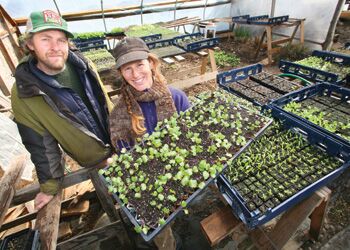
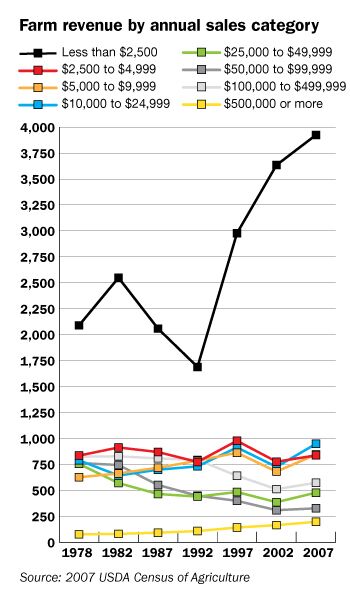
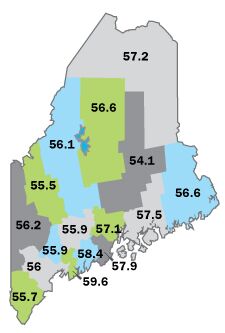
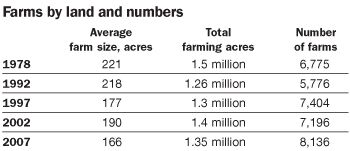
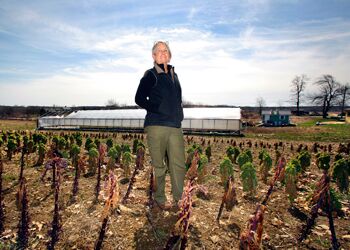










Comments